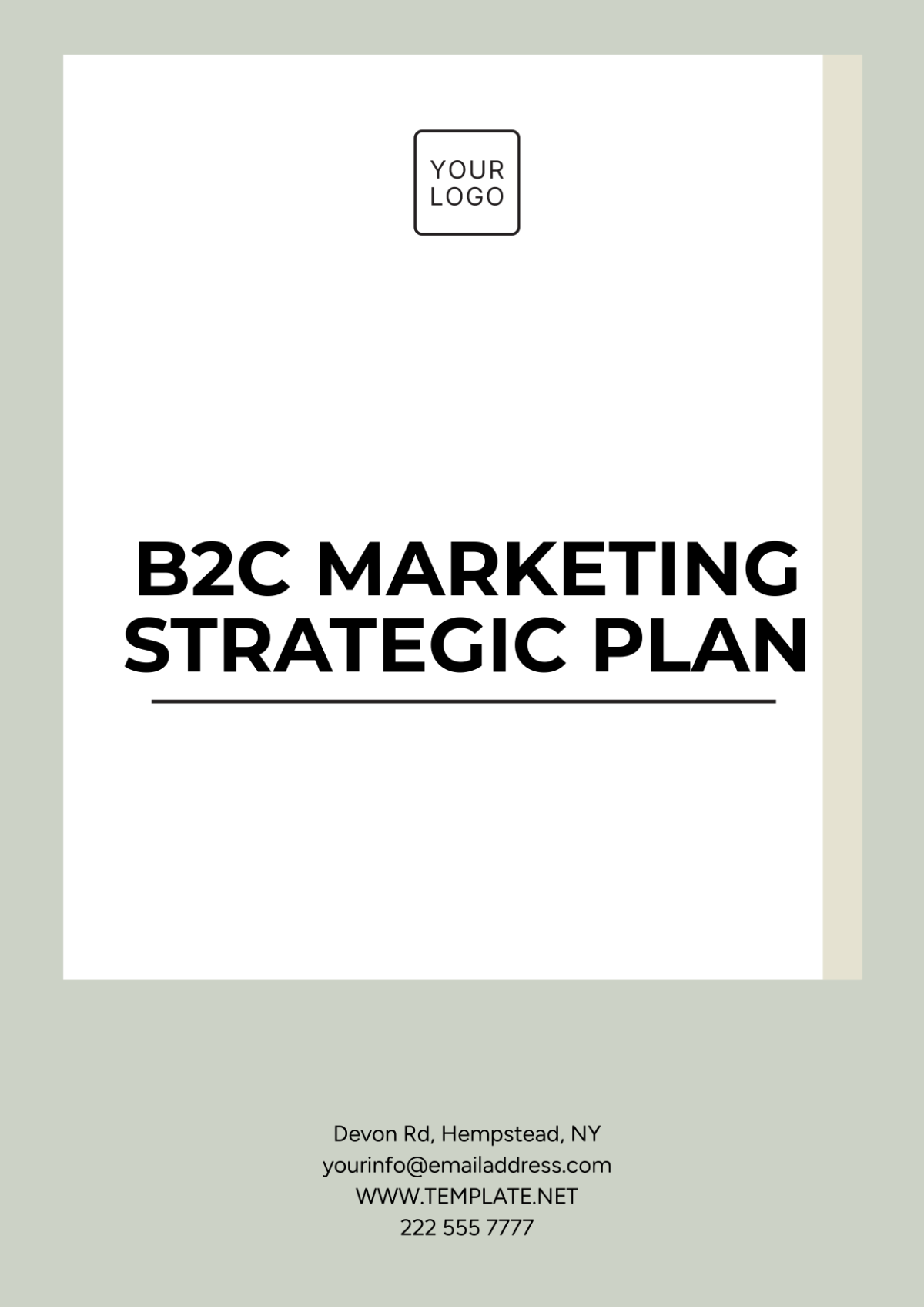Free B2C Marketing Strategic Plan

Prepared by: [YOUR NAME]
Date: [DATE]
I. Executive Summary
This B2C Marketing Strategic Plan outlines the objectives, strategies, and tactics employed to enhance market penetration and customer engagement. Our plan is structured to leverage digital and traditional marketing channels to drive brand awareness and sales growth over the next 12 months.
II. Market Analysis
A. Industry Overview
The B2C sector is experiencing rapid digital transformation, with an increasing emphasis on e-commerce and personalized customer experiences. The market is competitive, with consumers seeking convenience and value.
B. Target Audience
Our primary audience consists of millennials and Gen Z, characterized by digital savviness and a preference for mobile interactions. Secondary audiences include young professionals and families who value quality and explore multiple channels before purchasing.
III. Marketing Objectives
Increase brand awareness by 30% within the first quarter.
Achieve a 20% increase in online sales within six months.
Improve customer retention rates by 15% year-on-year.
Enhance social media engagement by 25% within six months.
IV. Marketing Strategies
A. Digital Marketing
Focus on enhancing digital presence through SEO, content marketing, and PPC campaigns to attract and engage online consumers.
SEO Optimization: Improve website ranking through keyword research, content updates, and technical optimization.
Content Marketing: Develop high-quality blogs, videos, and infographics tailored to customer interests.
PPC Campaigns: Utilize Google Ads and social media ads to target specific demographics.
B. Social Media Marketing
Leverage popular social media platforms to create brand awareness and foster community engagement.
Platform Focus: Prioritize Instagram, Facebook, and TikTok due to their high engagement rates.
Influencer Partnerships: Collaborate with micro and macro influencers to reach larger audiences.
User-generated Content: Encourage customers to share their experiences and feedback.
V. Traditional Marketing
A. Advertising
Implement print and broadcast advertising to complement our digital efforts and reach a broader audience.
Print Ads: Utilize magazines and newspapers targeting our demographic segments.
Radio and TV Spots: Engage audiences during peak hours to maximize reach.
B. Events and Sponsorships
Participate in industry events and community sponsorships to build brand visibility and trust.
Trade Shows: Showcase our products and services at relevant industry exhibitions.
Local Sponsorships: Sponsor community events to strengthen local market presence.
VI. Budget Allocation
Marketing Channel | Budget ($) | Percentage |
|---|---|---|
Digital Marketing | 100,000 | 40% |
Social Media Marketing | 75,000 | 30% |
Traditional Marketing | 50,000 | 20% |
Events and Sponsorships | 25,000 | 10% |
VII. Performance Metrics
Website Traffic: Measure increases in traffic and conversion rates.
Sales Growth: Track revenue changes month-on-month.
Customer Engagement: Monitor social media interactions and feedback.
Brand Awareness: Conduct surveys to assess changes in brand recognition.
VIII. Conclusion
This strategic plan serves as a roadmap for enhancing our B2C marketing efforts. By implementing the outlined strategies and regularly evaluating performance, we aim to achieve our objectives and establish a stronger market presence.
- 100% Customizable, free editor
- Access 1 Million+ Templates, photo’s & graphics
- Download or share as a template
- Click and replace photos, graphics, text, backgrounds
- Resize, crop, AI write & more
- Access advanced editor





























